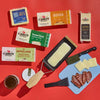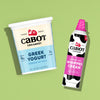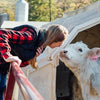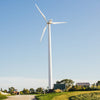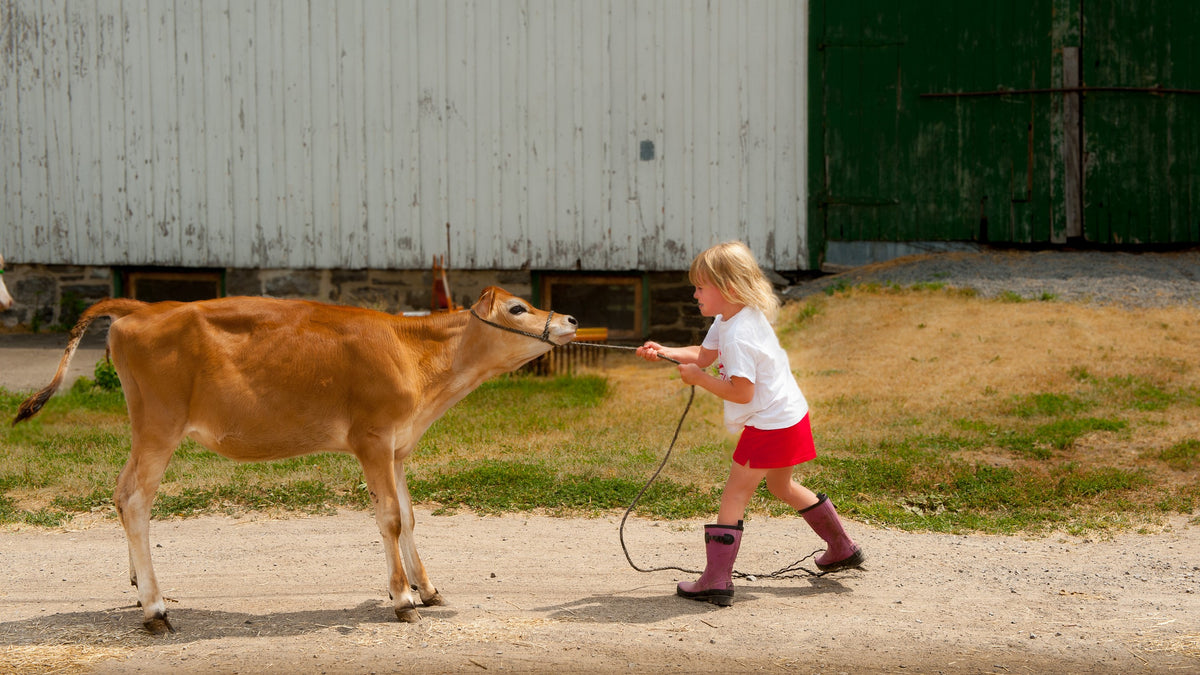
Farmer Friday: Woodcrest Dairy
Good for the environment, good for allWhen Peter Braun, a mechanical engineering student from New Jersey, met Michelle Cruikshank, a pre-veterinary student from northern New York, he did not anticipate becoming a farmer. But, about two decades and seven kids later, to hear Peter tell it, it’s not as big a stretch as one might think. “Engineers are really problem-solvers,” he explains and there have been plenty of opportunities for Peter to apply his analytical skills and practical knowledge to improving a variety of systems at the large dairy and elite breeding farm he now co-owns with his in-laws, Dr. Robert and Melanie Cruikshank.

More efficient systems, Peter explains, benefit not only the animals and the business bottom line, but also the environment. “If we breed the best animals and grow the best feed we can and then feed the cows the best and right amount of feed, they will produce milk more efficiently, stay healthier and there will be less wasted energy of all kinds,” he says. “At the end of the day, if I step back and see a group of contented cows doing well and a field of corn growing well, I see a job well done.”

One of the most recent projects at Woodcrest Dairy is a methane digester that helps process some of the manure produced by the almost 6,000 cows and calves spread between the various individual farms that comprise the farm. Simultaneously, the digestion process generates enough electricity to power one of those farms (about the equivalent of 150 houses’ power needs) and will soon feed an additional equivalent amount back to the local power grid. As a further benefit, the dry, essentially sterilized solids that come out of the digester are being used for cow bedding that is more comfortable and cheaper than the wood shavings Woodcrest previously had to truck in to the farm. Clearly the project, which was supported by both federal and state grants including funding from the New York State Energy Research and Development Authority, is a win-win-win.

For Peter, this kind of accomplishment brings him great satisfaction as he also watches his and Michelle’s seven children grow up on the farm near their grandparents, aunt and uncle, and cousins. One of the original motivations for moving to the farm was to raise their kids around family with space and a connection to the outside.

From almost 4-year-old Caleb to 18-year-old Jesse, they are homeschooled by their mother with age-appropriate farm and other outdoor activities woven as they fit into their daily life. Peter also appreciates the flexibility of his days to pop by the house to share lunch with his family, take them to sports practices, or help out with a thorny calculus problem challenging one of the older children.

Recently, he notes, the older kids traveled to an annual get-together in Pennsylvania with other students with whom they interact in on-line classes. Their father reports that they came back and shared that some friends and their families were very interested in “what farming is all about.” It was heartening, Peter said, to hear that more people “want to learn, that they realize that farming is important and that they are a few degrees too many separated from agriculture.”
Composting
Although a methane digester and composting are quite different, they both convert something we consider largely waste into something of value. Home composting is a good family project that helps emphasize important environmental goals like reducing and reusing waste. Here are some tips on how to get started: To Learn more about composting, check out our blog on backyard composting “HOW TO’s”!
